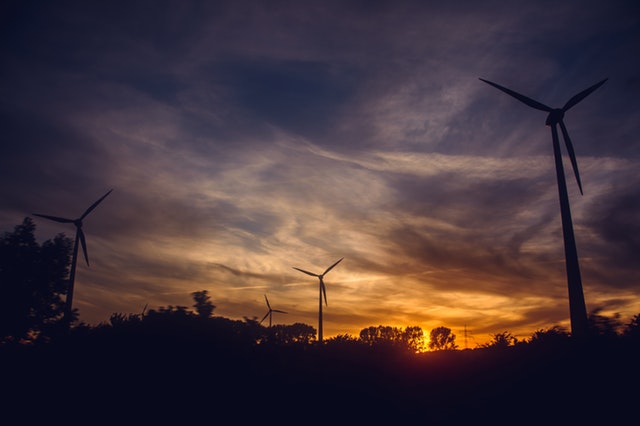How Does Anti-Islanding Work? | Grid-Connected Inverters
The state of the power grid didn’t mean much to wind energy 25 years ago, and vice versa. Today, wind power — including distributed wind — can help play a big role in solving one of power distribution’s most tricky problems.
Islanding occurs when there is a blackout, but some part of the electrical grid is still producing power for itself. While new developments in inverter technology are being considered to provide Islanding techniques as a mitigating tool for grid instability, today the powers-that-be look to anti-islanding to keep the world running safely during low power grid events.
How does anti-islanding work? And how do grid-connected inverters play a role in reducing the impact of outages?
Anti-Islanding’s Definition & Its Importance
What is anti-islanding? Understanding it starts with learning about islanding.
One example of islanding occurs when a grid supply is powered by solar panels. It could be a small, household solar installation or a large, commercial solar plant. Even during a blackout, without controlled prevention solar panels would continue to feed excess power back into the grid as long as there is an excess at the point of generation. The affected area is identified as an island because it is surrounded by lines that are not delivering power.
In some cases, islanding is intentional. When this occurs, the inverter detects the grid event and automatically disconnects itself from the grid, creating an island intentionally. The single-phase grid connected inverter is then forced to push power to the local circuit. This method is used as a backup power generation system.
The Problems With Islanding
Three issues have caused the power generation industry to largely phase out islanding.
- A grid outage, bringing all homes and businesses back on the grid needs to be done in stages. Everyone’s A/C unit can’t start at once in July! That onslaught can quickly overburden the power grid. Uncontrolled islands can complicate the power restoration process.
- Islanding produces a dangerous situation for electric personnel who might not realize a particular circuit is still energized. Without anti-islanding, the “should-be-dead” power lines are being back-fed by the generation from the island.
- Without inverter anti-islanding protection, equipment failure can occur.
How Does Anti-Islanding Work?
Embedded generators — including diesel, solar, and/or wind — that are connected to the grid need electrical protection. An inverter connected to a grid and outfitted with anti-islanding protection is designed to disconnect the electrical supply from the grid if a blackout occurs.
Anti-islanding protection is a way for the inverter to sense when the power grid is struggling or has failed. It then stops feeding power back to the grid.
The importance of anti-islanding protection cannot be overstated. The U.S. and other countries that rely on a developed grid system require that all anti-islanding inverters must meet strict specifications and performance levels to prevent islanding.
Determining Grid Power Loss
Grid power loss can be challenging to interpret. There are normal fluctuations that occur in the grid from time to time … and then there are true power failures. To maintain balance and efficiency, engineers use certain components and design tricks to create anti-islanding protection. At a very high level, this detection surrounds the application of tiny frequency disturbances into the grid and measurement of the result. If there’s a measurable change, the grid is unstable.
Grid-connected inverters must produce AC power that matches the power already present on the grid. While there are other elements that must also be parallel, the frequency, voltage and feed synchronize phases are critical.
A power source and a three-phase grid connected inverter receive various degrees of DC current and convert it to AC power that matches the grid supply. A disconnection at the grid would have the expected result of zero voltage. This indicates that a service interruption has happened.
When the load pulled matches the output of the panels, they can continue to supply power. This means there isn’t an obvious sign that a power interruption is in progress.
Matching production and usage likely means that grid failure will result in more transient signals. In many cases, there will be a short line voltage decrease. While this could mean that a fault is potentially occurring, this could also be caused by normal functioning, such as a large electric motor starting directly online. Anti-island sensing is a very complex and interdependent process for these reasons.
Anti-Islanding in Inverters
With today’s complex wind energy storage methods that use an inverter, choosing the right grid tie inverter connection is crucial. With an anti-islanding inverter connected to a grid, safe and reliable power is more likely.
Active anti-islanding strategies that connect wind turbines to grid tie inverters are the most effective way forward for power distribution.
Islands of the Future
As global penetration of distributed generation increases, the potential for new and novel applications of inverter control emerges. Some rural electric cooperatives can remotely control the hot water heaters in the homes of their members for Load Management.This provides a level of stabilizing control over the grid to the power company with extremely low impact to the user. It’s not hard to imagine a future with smart inverters controlling distributed generators across an entire region that can work together to strengthen, support and supplement the generation at central, conventional power plants. With sufficient capacity, such a system could even provide enough power for an entire region to ride-through a blackout!
This same kind of grid detection response comes from other Windurance products. Today, Windurance is deploying grid-connect inverters for the distributed wind generation and battery storage markets. Anti-islanding is a central requirement for these products.
To learn more about how to successfully navigate high- and low-voltage ride-through with advanced inverter technology, ask a question below:




